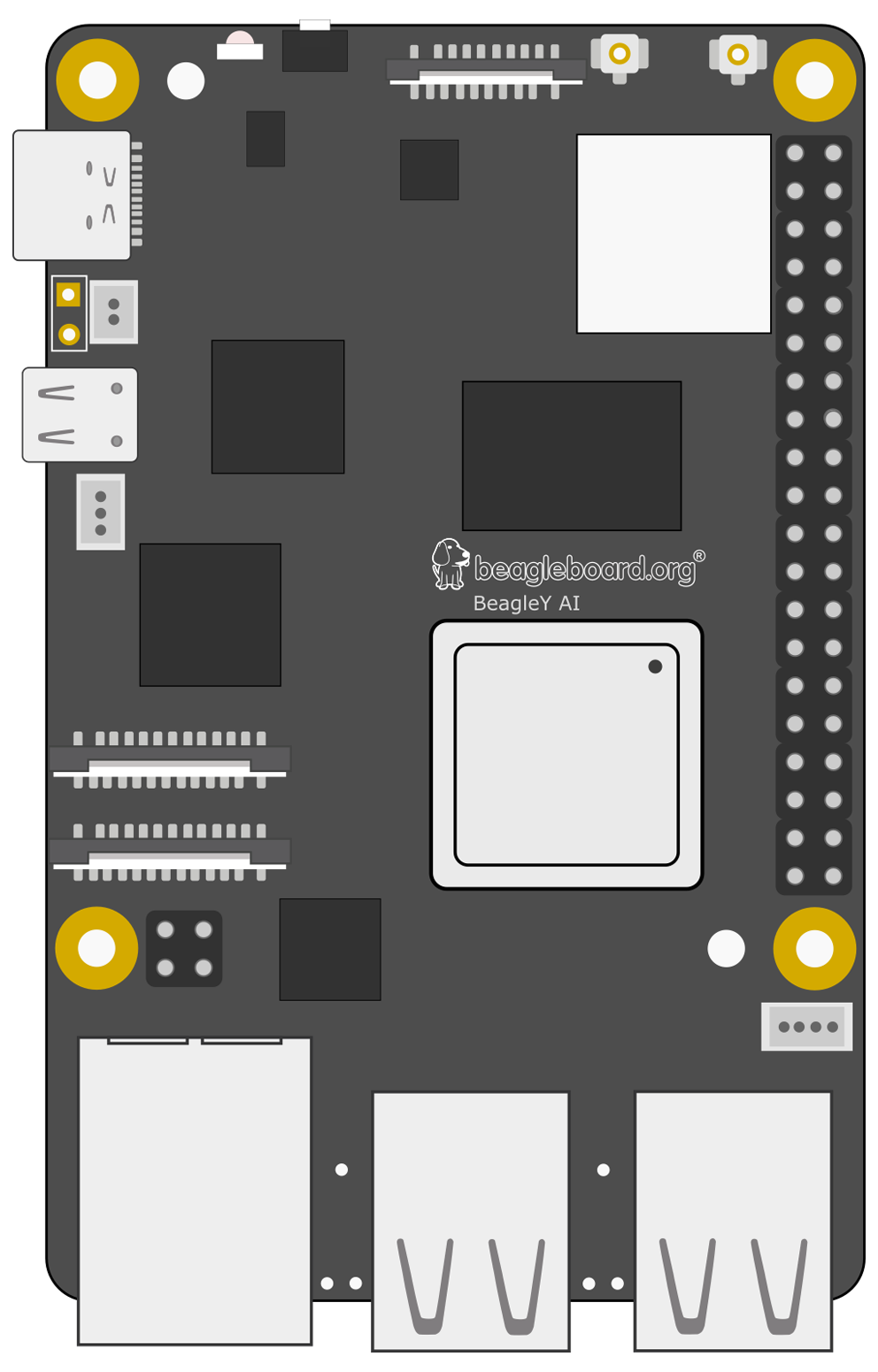I2C - Inter Integrated Circuit
GPIO 2 and GPIO 3 - BeagleY-AI's I2C1 pins - allow for two-wire communication with a variety of external sensors and devices.
The I2C pins include a fixed 2.2 kΩ pull-up resistor to 3.3v. They are not suitable for use as general purpose IO where a pull-up might interfere.
I2C is a multi-drop bus, multiple devices can be connected to these same two pins. Each device has its own unique I2C address.
You can verify the address of connected I2C peripherals with a simple one-liner:
sudo apt-get install i2c-tools
sudo i2cdetect -y 1
You can then access I2C from Python using the smbus library:
import smbus
DEVICE_BUS = 1
DEVICE_ADDR = 0x15
bus = smbus.SMBus(DEVICE_BUS)
bus.write_byte_data(DEVICE_ADDR, 0x00, 0x01)
On BeagleY-AI, GPIO 0 and GPIO 1 are shared by the PMIC, Core Rail DCDC converter, Board ID EEPROM and External RTC and exposed as I2C0 - while they can be used as an alternate I2C bus, this is actively discouraged unless you are an advanced user and know what you're doing.
(*) BeagleY-AI can make an additional I2C interface available (I2C4) via Header Pins 15 and 22 respectively.
Details |
